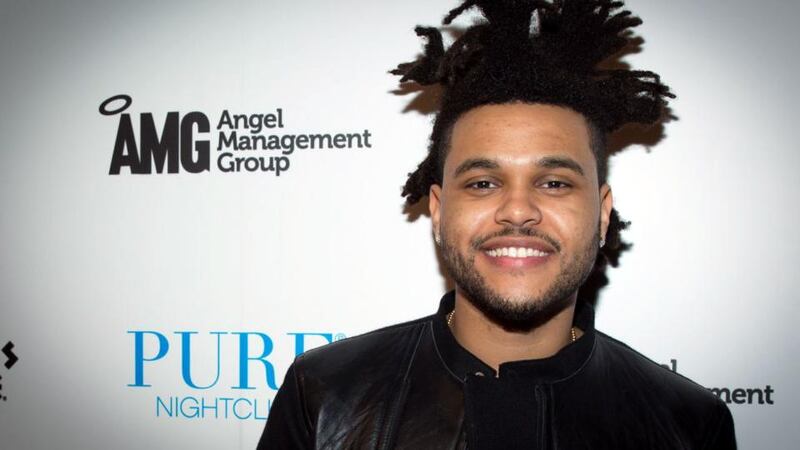Last month marked the fifth anniversary of Canadian rap crooner Drake's breakthrough mixtape So Far Gone, a woozy down-tempo piece that found its author musing on the trappings of fame despite not really being all that famous. But Aubrey Graham was destined for large-scale success, and So Far Gone was the right record at the right time.
Rejecting all established rap norms – much like Kanye West's confessional electro wonderland 808s and Heartbreaks had done the year previous – Drake too was spitting confessional rhymes over sparse, atmospheric instrumentals. Unlike West, Drake didn't need autotune to carry a melody on his gentle hooks. And contrasting all the other r'n'b singers who might consider themselves his contemporary, Drizzy rapped hard. Real hard.
For the one-time teen soap actor, it was the first assured steps on the road to hip-hop superstardom – a road that takes him to the O2 this week for his second visit in two years.

Joining him will be his spellcheck-unfriendly associate The Weeknd (Abel Tesfaye to his mother), who in 2011 released a series of mixtapes that took Drake's already chilly sound and threw it into the deep freeze. House of Balloons, Thursday and Echoes of Silence are dark, soulful and a little bit scary – their impact only punctuated by the mystery surrounding their media-shy creator.
Take away their Canadian heritage, and the duo hardly appear to be natural allies. There’s Drake, who with three albums to his name has ascended to hip-hop’s summit recording emotional tracks about girls and stuff. Then consider The Weeknd, who creates an isolated, distressing brand of r’n’b that scores his hedonistic tales of lurid sex and drug-fuelled anguish. Both their careers and sound have frequently intertwined, though not without the occasional tiff. Here’s a bulletpointed history charting the career’s of two of Toronto’s finest.
Drake first appeared in the public eye as an actor, earning his first credit in the Canadian TV series Blue Murder before an eight-year, 139-episode stint on popular teen drama Degrassi: The Next Generation. In contrast, little is known about Tesfaye's pre-Weeknd life, though when answering fan's questions on a Reddit thread he offered a small glimpse by revealing that at aged 17 he and some friends, "grabbed our mattresses from our parents threw it in our friends shitty van and left one weekend and never came back home".
After hearing his first mixtape (House of Balloons) under a curiously misspelled moniker and a series of faceless black and white images, many journalists and bloggers mistook The Weeknd as a group. Others weren't sure if the high falsetto emulated from a male or female. With a Twitter mention from Drake shining the spotlight on this mysterious new artist, some queried as to whether the rapper had a hand in the music's creation.
Both Drake and The Weeknd come from backgrounds not typical among hip-hop’s elite. As well as being Canadian – whose history in the genre is relatively sparse – biracial Drake was raised in the Jewish faith, while Tesfaye is of Ethiopian descent and speaks fluent Aramaic.
Partially linking both artists' sound is their affinity for finding inspiration in untypical places. For example, on So Far Gone Drake raps over a slightly reworked version of Swedish indie pop group Peter, Björn and John's Let's Call It Off and even twists Lykki Li's Little Bit into a kind of unauthorised duet. The Weeknd heavily sampled hazy dream pop group Beach House on two of House of Balloons tracks and on his major label debut, Kiss Land (released last year). And he somehow turned Portishead's battering classic Machine Gun into pleasurable pop jam Belong to the World.
Both have an affinity for abbreviations. Drake’s calling card is OVO, which stands for October’s Very Own (a reference to his month of birth), and has now been developed into a record label, clothing line and festival. Tesfaye uses XO as his slogan and logo, though a far more sinister one, with the X said to represent the drug ecstasy and O supposedly meaning oxycodone. The pair have frequently combined brands when collaborating.
The O2 audience can expect both artists to share the stage as they've joined forces for multiple duets. Their first, The Zone, is a shadowy piece that follows Drake and Abel's thought process as they gazed upon pole dancers in a murky strip club. But Crew Love and its spiritual sequel, Live For, are essentially songs dedicated to each other and the rest of their entourage, with Drake revealing on the former, "There's times when I might blow 50k on a vacation for all my soldiers just to see the looks on all they faces." Lucky them.
They may be best friends these days, but rumours of tensions began to surface last summer when Tesfaye reportedly rejected the opportunity to sign with Drake's newly formed OVO label imprint, and instead penned a deal with Universal Records. Fuelling the story was a series of tweets and lyrics from Drake that seemed to refer to the beef. (Sample tweet: "You won't get away with just a thank you . . . you owe me a favor.")
However, in a rare interview with Complex , Tesfaye set the record straight: "I told him from day one what my decision was going to be. I wasn't going that route. I was going to go my own route. And he supported me."

















